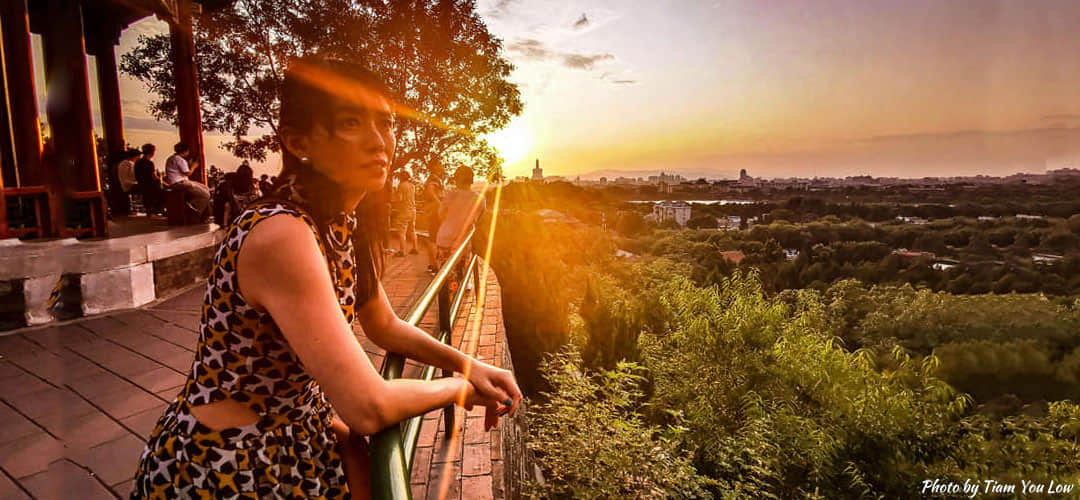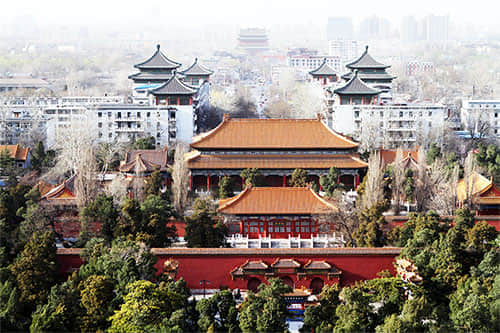Jingshan Park

Jingshan Park is an imperial park with an excellent environment. It now has a history of more than eight hundred years. In Jingshan Park, there are various kinds of flowers, such as peony, evening primroseand h sorbaria sorbifolia. In spring, all kinds of flowers bloom in the garden. In autumn, the weather is cool and invigorating, making the park an ideal place for morning exercise.
The central peak of Jingshan Mountain rises to a height of 45.7m. It is the center of old Beijing. The name of the pavilion on the central peak of the mountain is Wanchun Pavilion. It is a must-visit attraction for all visitors. From this spot, you are able to look down on the entire downtown Beijing and take a picture of the entire Forbidden City.
- Chinese Name: 景山公园 Jǐng Shān Gōng Yuán
- Duration: 1 hour
- Entrance fee: RMB 2
- Opening hours: 6:30-20:00
- Address: No.44 of Jingshan West Street, Xicheng District, Beijing
- Best time to visit: All year round
- How to get there: You can take bus No.111 or 124 to get off at the stop of Jingshan East Gate.
Highlights of Jingshan Park
Jingshan Park was the imperial garden for the Yuan, Ming and Qing dynasties. In the park there are a lot of ancient buildings and old trees. And it is also an ideal place for you to look down on the Forbidden City. There are three gates in Jingshan Park, the East Gate, the West Gate and the South Gate. Usually, visitors enter the park via the South Gate (opposite to the Gate of Divine Might of the Forbidden City). The park does not cover a large area. It may take you 15 to 20 minutes to climb up to the top from the foot of the mountain.
1. Wanchun Pavilion: The best sight-seeing spot

A bird-view of the Forbidden City from Jingshan Park
At Wanchun Pavilion, when you look southward, you are able to see the entire Forbidden City. If you look northward, you are able to see the bell tower and the drum tower on the middle axis. When you look westward, you will see the White Pagoda in Beihai Lake. If you look to the southeast, you are able to see Zhongnanhai. When the weather is fine, the location will be very crowded (especially at the moments of sunrise or sunset). If you want to have a nice point of view for your pictures, you need to get there in advance.
2. Ancient Buildings with a Long History
In Jingshan Park, there are also some other attractions, such as Qiwang Tower, where Confucius is enshrined, and Shouhuang Hall (the hall for coffins and portrait deposits for the funerals of the Ming and Qing emperors, as well as for ancestral worship by the imperial house). On the east side, the cultural relic sites such as Yongsi Hall, Guande Hall, Huguozhongyi Temple and Wuzuofeng Pavilion are the sacred places for the promotion of Chinese culture of filial piety.
3. Fitting in the Lifestyle of the Locals
Jingshan Park is also a leisure site for Beijingers to sing and dance. You might see a lot of civilian choirs singing revolutionary and folk songs. When the weather is fine, some locals like to climb up to the top of the mountain to see and take pictures of the sunset as soon as they leave their offices. In the park, there are several tens of thousands of peony and herbaceous peony plants. In spring, summer and autumn, there are flower shows. What’s more, there is also a photography service spot in the park. You may put on the Qing costumes to play the emperor or the princess. You need to pay an extra fee for the service.
Drop us a line and we'll connect you with the top China expert in no time!